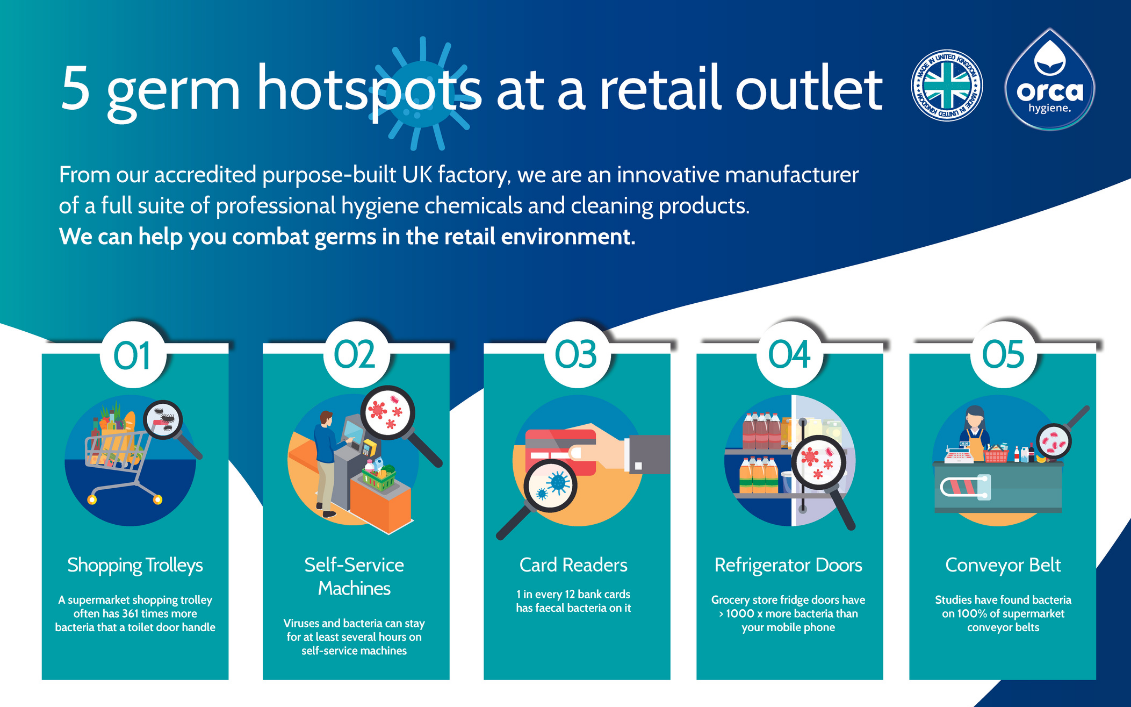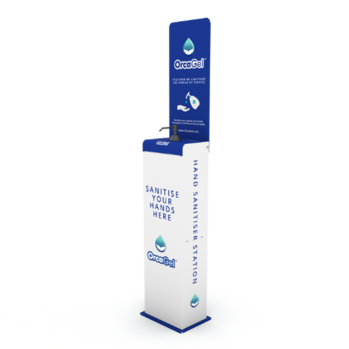Retail Hygiene: Cleanliness to bring shoppers back to stores

The retail sector has been subject to a period of upheaval for longer than most sectors. The pandemic is the latest challenge the retail sector has had to face, in the wake of changing consumer behaviour, increased internet shopping and challenging economic conditions. Making up for over 3 million jobs and 5% of the UK’s total economic output, the sector remains a powerhouse of the UK’s economy and is vital to the country’s ongoing recovery.
In order to hold the place it does in the UK’s economy, customers must feel secure in the knowledge that by choosing to physically shop they are not putting themselves in more danger than they would be by opting to shop online.
Enhanced and visible hygiene will help bring shoppers back to stores
Research by Deloitte found that over half of UK consumers were still concerned about shopping in store and an even higher percentage were worried about contracting the virus in a retail setting.
Consumers now expect more overt demonstrations of hygiene from retailers so ensuring high standards of cleaning and hygiene are paramount.
In this post we look at what steps can be taken to keep retail stores hygienic and safe for all, helping encourage shoppers back.
The importance of hand sanitiser placement in retail stores to prevent the spread of germs and infection
Government advice for the retail sector recommends providing hand sanitiser in multiple accessible locations across stores.
Stores were eager to implement hand sanitising stations at the outset of the pandemic, placing them at the most obvious points within the premises, such as the entrances and exits. However, it is important that the customer’s touchpoint journey throughout the building is considered carefully, with sanitising stations also available at, for example, elevators, wherever chip and pin devices are required, near door handles and upon entry/exit to fitting rooms.

Should you require additions to your sanitising stations, or if you seek resupply of your existing sanitising stations, please see our hand and surface wipe collection. With 70 and 80 per cent alcohol options, plus an alcohol-free formula, our extensive hand sanitiser range instantly sanitises hands with no need for water, soap or hand towels – perfect for when washing your hands isn’t an option but where cleanliness is the utmost priority.
Help consumers feel safe during their shopping experience, as well as protecting staff, by increasing awareness and adherence to better hygiene by using posters
The government also recommends using signs and posters to enhance people’s awareness:
- of how to wash their hands well,
- that they should wash their hands frequently,
- that they should not touch their face, and
- they should cough or sneeze into a tissue which is binned safely, or into their arms if a tissue is not available.
In 2020, for every pound spent in Great Britain in 2020, 41 pence was spent in food shops, according to research from the House of Commons Library. It is therefore no surprise that while many types of retail outlets closed during lockdowns (and may be forced to do so again if future lockdowns occur), food stores were permitted to stay open – with even more overt visible signs of hygiene, such as frequent trolley and basket disinfecting to Perspex protection screens between the checkout cashier and customers.
It remains important for supermarkets and other retail outlets to maintain visible signs of hygiene as a way of assuring consumers’ safety. Knowing the germ hotspots in a retail environment will allow everyone to stay vigilant to high risk areas for catching germs. Please download our print-ready poster to serve as a reminder.

Download print ready poster of germ hotspots in a Retail outlet
For further posters, to assist in setting cleaning guidance and procedures for your cleaning staff, please refer to our collection of wall charts.







